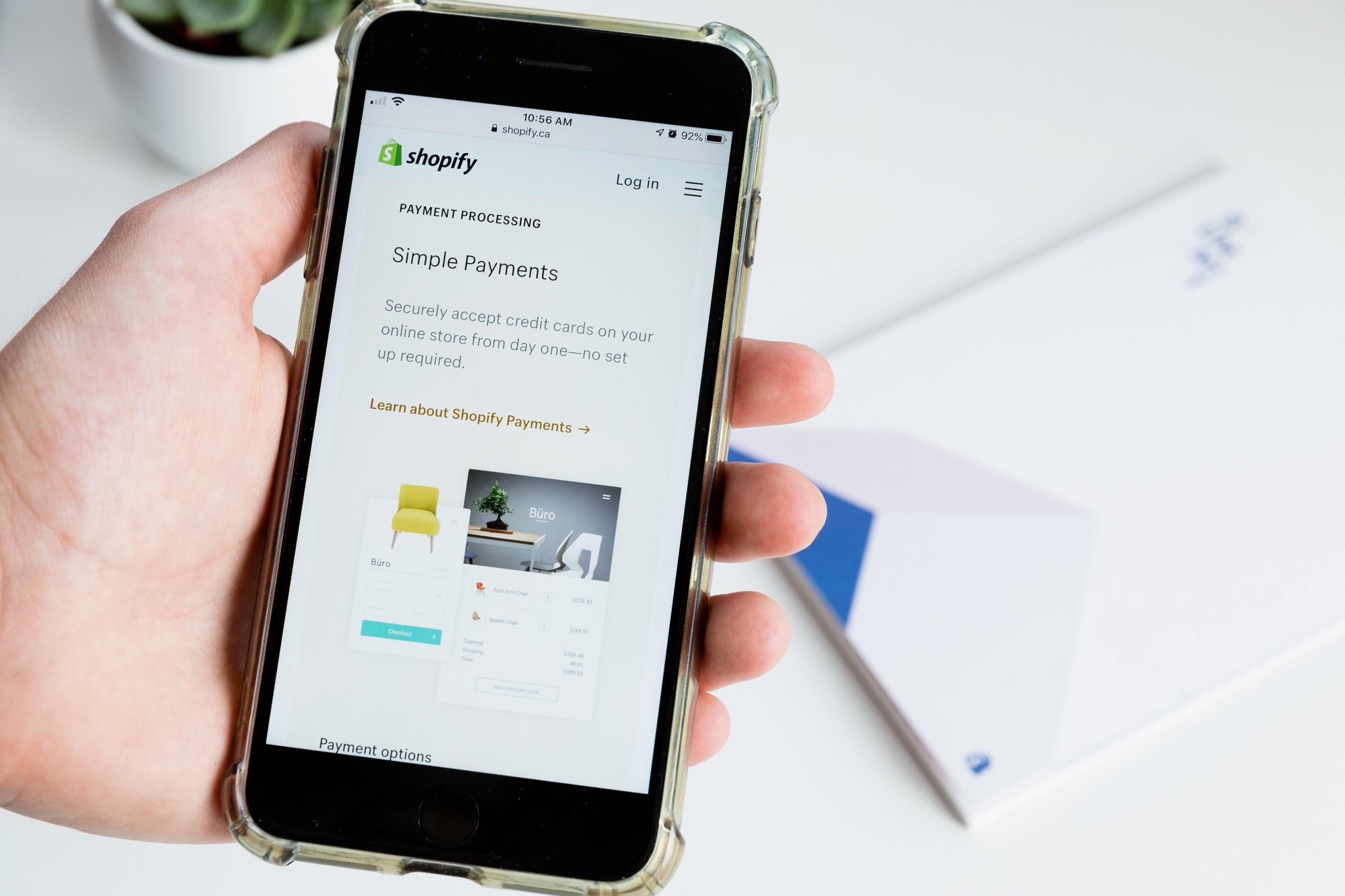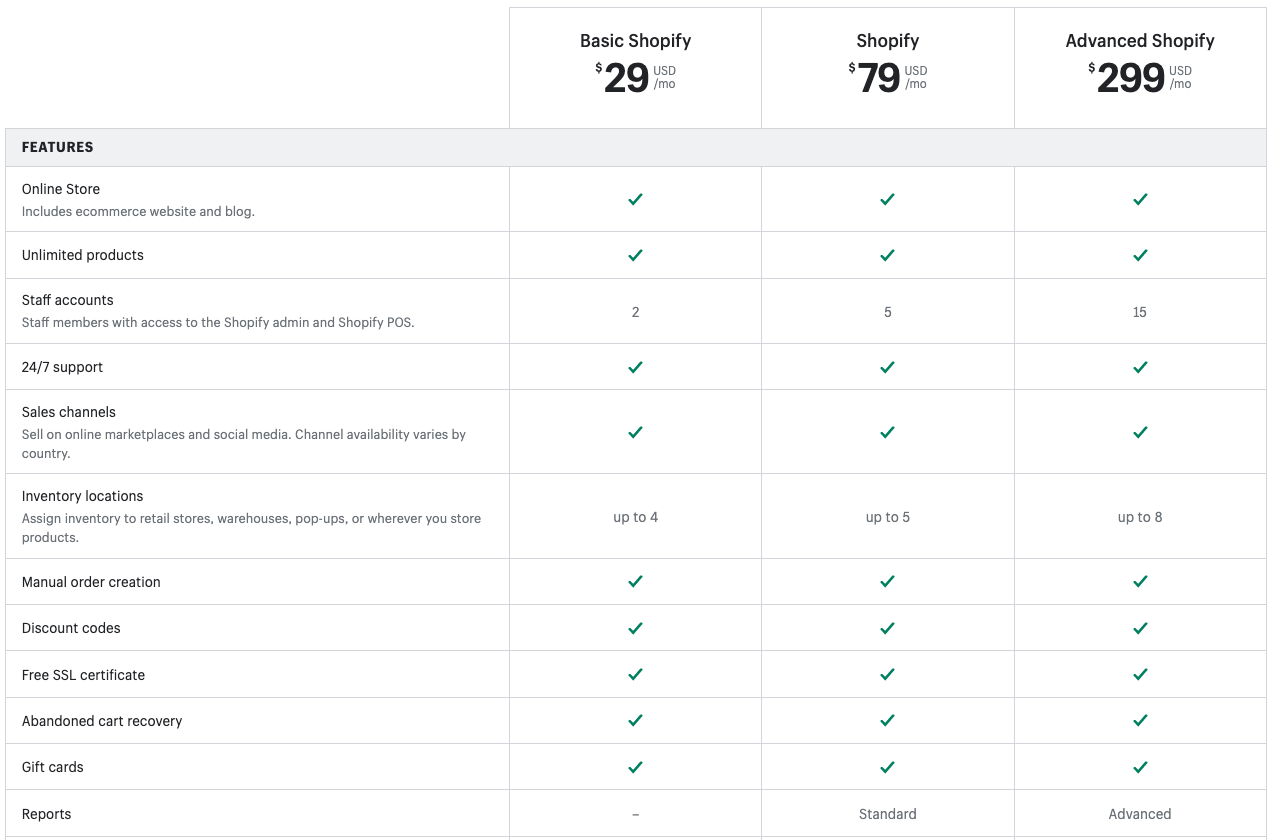If you've ever purchased from Lindt, The Economist, FitBit, or Allbirds (just to name a few), then you've likely experienced the Shopify platform and its suite of commerce solutions. Shopify, a multinational digital sales platform, has become an essential resource for businesses to grow their online presence. Do you want to sell products in a physical location? With the Shopify point-of-sale app, you can. Shopify also offers services including payments, marketing, shipping, and customer engagement tools. Shopify, it's not just for building a store or selling products; it's a complete commerce platform that allows you to quickly launch your business and sell to customers regardless of where they are located.
What is Shopify? Here’s the Back Story.
Headquartered in Ottawa, Canada, Shopify came into existence because CEO Tobias Lütke did not like the current eCommerce solutions available to him and his partner Scott Lake. The two entrepreneurs founded Shopify in 2006 after a dissatisfying experience attempting to open Snowdevil, an online store for snowboarding equipment.
Development continued when Tobias and Scott launched an application programming interface (API) and an app store for their platform. Developers everywhere could create Shopify apps and sell them through the store to assist other small businesses with improving their online presence.
In 2010, a free mobile app was launched on the Apple App Store, allowing shop owners to keep track of their online businesses on the go. In that year, the Ottawa Business Journal named Shopify as Ottawa's Fastest Growing Company. Between 2012 and 2013, Shopify acquired several companies, including Select Start Studios and Jet Cooper. These acquisitions increased their employee knowledge base and allowed them to continue developing more innovative mobile apps.

The introduction of Shopify Payments in 2013 increased sales by allowing the platform to accept credit cards through a third party. The company also launched its iPad point-of-sale system, allowing easy access to store functions for physical shops. Due to its vast popularity and ease of use, Shopify was named the preferred migration provider when Amazon closed its Webstore for small and midsize retailers in 2015.
Since then, Shopify has developed and launched an integration technology that allows merchants of all sizes to sell their online Shopify stock on Amazon. During the last few years, Shopify has grown to include networking, chat options, ad-based agreements with social media, and a fulfillment network to rival any other.
Recently, in the wake of COVID-19, Shopify experienced a surge in business users, and the stock traded at 350 times more than analyst expectations.
Shopify sites average 58 million visitors every year, and the platform received mostly four and five-star reviews throughout 2020 and into 2021.
Shopify eCommerce Platform (How It Works)
Shopify, a subscription-based online store, allows you to sell virtually anything at any time. If you are considering starting an eCommerce business, it's the perfect platform to sell your products, online and in-store through Shopify's POS app.
What makes Shopify such a standout is its ability to bring disparate tools, systems, and data together. The Shopify commerce platform offers all of the business tools you need in one place, saving you a lot of time and money. Plus, it allows you to customize your online store to adhere to your unique brand. Ultimately, Shopify is one of the few platforms that consolidates everything you need to run a business. Its ability to integrate with other tools is why many business owners flock to the eCommerce platform.
Merchants around the world use Shopify daily to run their businesses. Store owners need an eye-catching venue for showcasing products, engaging ways to interact with customers, reliable payments, fast shipping, and daily finance and operation dashboards. They can find every tool they need on the Shopify platform and in the App Store.
An estimated 820,000 plus active online shops are using Shopify in at least 175 countries. The third-largest online retailer behind Amazon and eBay, Shopify has free and paid themes to suit any store's needs. Even major brands, such as Nestle and Pepsi use Shopify to run the online portion of their businesses.
Why use Shopify?
Small businesses gain traction by having unique and engaging storefronts, powerful SEO, and a trusted platform to handle a growing number of transactions. Larger businesses rely on Shopify’s stability, performance and security. Shopify has options that can assist with every aspect of your business, from start-up to expansion and global scale.
Whether you have a physical shop that needs to expand to an online presence or you need a mobile solution, Shopify has the tools you need to start on the right foot. Shopify is not just a platform to host your website; it is a host of website tools and expert support that can assist with every step.

What is included in Shopify?
With the monthly subscription, you will find Shopify’s core product that includes:
- templates to assist you in designing your store
- tools to sell online and in-person
- integrated payment processing
- the best-converting checkout funnel
- SEO and marketing tools
- reporting tools
As a foundation, this core product is made to build on and grow with the company. Once you set up the basics of your store, you can select from a variety of tools to help you run your business. Shopify offers access to capital and new payment options that assist your business with putting that next step into place.
You can expect great things from Shopify’s core website service, including:
- A hosted online store with your unique domain name. Here you can set up to sell your products remotely, create a blog, and other basic web pages. You customize it for your unique business needs. Web hosting is free with all plans, and the security and updates are maintained by Shopify’s servers.
- In-person point of sale. Use the app to create a POS anywhere in the world. Are you traveling to trade shows, markets, or festivals? The powerful app allows you to transact on the go securely. Just register your domain, create your profile, and order the hardware you need to get started.
- Checkout and payment processing. The fastest, most up-to-date shopping cart is available to you to use online and in person. Pair that with over 100 payment gateways or Shopify Payments, and you will be ready to close sales and create a delightful customer experience.
- Shipping logistics. One of the hardest parts of online businesses is shipping. You need a solution that is dependable and affordable. Shopify has solutions like fulfillment, USPS scan forms, and pick-up solutions from DSL and UPS. Curbside pickup and delivery options are available, as well as various international shipping options.
- Your back office. From mobile app and marketing to reports, analytics, and award-winning customer support, Shopify has you covered. No matter what is happening in your business, there is an option for assistance and expansion. The data is easy to view and understand. Educational courses are available as well.
How much does Shopify cost?
Start with a free 14-day trial, no credit card needed. Start building your store, then choose the plan that fits your needs to continue hosting your new business site. Plans begin at $29 a month and range up to $299, depending on the features. Key features include the ability to have up to four locations and two staff members. Payments made through Shopify do incur fees from 2.7% to 3.9% depending on where and how the payment is made. You will also receive a 77% shipping discount through DHL, UPS, and USPS.
As you upgrade your plan, features are unlocked like fraud analysis, more professional reports, more employees, and more discounts. Each paid plan includes an online store, an unlimited number of products, 24/7 customer support, cart recovery, access to the App Store, free SSL certificate, discount codes, gift cards, and more.
Best of all, you're going to save money by not hosting your own website. Shopify includes free web hosting and the Shopify team with 24/7 supervision handles any kind of updates and security, freeing you to focus on running your business.
No matter what plan you are considering, you also need to take into account extras and variable costs such as Shopify Apps and the costs of processing payments.

Which Shopify Plan is Best for Your Business?
With five plans providing different features, it can be challenging to decide what you need and what you don’t to choose the most cost-effective plan for your business.
The large majority of retailers will have everything they need with the classic “Shopify” plan currently at $79 a month. For much smaller businesses with less than 1-2 employees, “Basic Shopify” might work but keep in mind the reporting features are limited with this $29 a month plan. Both of these plans are hosted online and let you set up a blog, use your own template, and sell products with ease. Thanks to the template store, you can easily set up the basic look you want.
Already have a website and just need easy checkout for a few products? Turn it into an online store with Shopify Lite for $9 a month. Yet another option exists Shopify POS Lite, a free plan that lets you sell products at a brick-and-mortar store using the Shopify system. Keep in mind a more advanced version exists that costs $89 per month. Additionally, there's Shopify Plus, an enterprise-grade solution for high-volume merchants and large businesses.
How easy is it to start a business with Shopify?
Thankfully, Shopify has simplified the process and is geared for use by non-technical people. You can start your eCommerce store with a few clicks, use templates for easy customization, and of course, server setup and maintenance are taken care of for you.
To get started, go to Shopify.com, click 'start your free trial,' enter your store name, and create your shop. Now for the fun part: choosing a theme that will determine what customers see and how they engage with your products and the store. You can use a set theme to begin and customize the look and feel from there. Both free and paid options are available. Do not forget to use a custom domain for that unique and easy-to-find website. Next, it is time to hop over to the payment center.
In the payment center, you have the option to set up Shopify Payments, PayPal, Amazon Pay, alternate third-party, and manual payment methods. Then you can choose to automatically capture payments or do so manually within the authorization timeframe. Choose the options best suited for you and your customers. Once completed, you will be able to begin taking payments.
After your store is set up, you’ve selected a Shopify plan, and your payment system is activated, you can begin looking into marketing and SEO options for your webpage. If you plan to sell internationally, be sure to select that option, and you’ll likely see an increase in your traffic by up to 35%. You can translate your website into another language with the included tools and accept other forms of currency.
Take advantage of the educational section to learn how to get the most out of your new business website. Learn tips and tricks to engage your customers and draw new ones in. If you are stuck, customer service is available 24/7 with experts to help you each step of the way.

laura-chouette-Qmzs43Sk4qk-unsplash-small
The majority of Shopify users will not need to hire a designer or developer to get their business up and running on Shopify. Shopify was built for folks with no design or development expertise. The platform provides free eCommerce templates (or ‘themes’) to choose from, each with several variants that provide a large number of options to get your shop set up and styled. If that is not enough, you can use a paid or ‘premium’ themes — which range in price from $100 to $180, and are all fully responsive for mobile use.
To add functions, Shopify has hundreds of third-party apps in its App Store that offer a quick installation on the website without coding.
However, if you need help navigating which apps are right for you, or have complex customization requirements, it may be best to find a Shopify developer or agency to help you bring your shop to life. When choosing a developer, make sure to ask for references and several examples of their work, as it’s important that the developer have expertise specifically in the Shopify platform.
A Shopify partner agency can also help you with optimizing your shop to either attract more new users or to make the sales journey frictionless. Commonly known as conversion rate optimization, this process focuses on turning more of your web traffic into paying customers.
The Shopify App Store
Through the Shopify App Store, you have access to a plethora of applications to customize your store. You don't even have to bother with code here. Simply choose the app you need offering a particular feature and Shopify lets you add it to your page. Unique apps like profit metrics, bundled discounting, automated daily inventory updates, plus multi-language translators exist to make managing and growing your business easier.
If you need something different, not available in the app store, you can hire a Shopify Expert to build it for you. They even let you build code on your own if you have the knowledge.
Upgrades You'll Want to Consider
While the basic Shopify platform is great for a small business to get started, you may need some of their upgrade features to eventually expand. Once your store reaches the limits of the basic plans, you may want to consider upgrading to Shopify Plus. This plan gives you more power to scale, advanced tools, and the lowest transaction fees of any Shopify plan.
One of the biggest advantages of Shopify Plus is a customizable checkout. You can increase the number of people that actually buy by as much as 30% or more with trust badges, pre-filled shipping information, countdown timers, customer reviews, and live chat all displaying as part of the checkout process.
Other advanced features to consider include shipping systems that work for your business, a marketing platform, detailed analytics and reporting, and a funding option called Shopify Capital. For marketing, one powerful feature to help you understand buyer behavior is Shopify Flow which lets you tag and segment customers based on buying behavior.

Conclusion
Shopify's all-in-one commerce platform makes entrepreneurship more accessible to anyone. Whether you're an ambitious pioneer or an established brand with customers around the globe, Shopify was built with you in mind.
Online retailers can benefit immensely from working with expert eCommerce developers who can help build and improve a store's online presence and conversion rate to grow sales and revenue.




